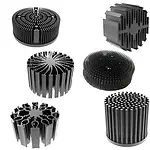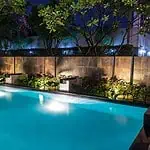Ever stood by a beach, watching the lighthouses flicker and guide the ships safely home? Or noticed the underwater lights at your favorite restaurant’s aquarium? Have you ever wondered what kind of lights can withstand the harsh conditions of a marine environment? The answer is Marine Grade Lights.
Marine Grade Lights are specialty lights designed for maritime conditions. Their unique features make them a preferred choice for outdoor lighting projects, especially in coastal regions or on vessels.
Are you contemplating whether Marine Grade Lights would fit you right? Well, let’s dive in and explore the depths of Marine Grade Lights.
What Makes a Light “Marine Grade”?
Marine Grade Lights are not just any lights. They are specially engineered to withstand harsh conditions prevalent in marine environments, like high humidity, salt air, and occasional splashes or immersion in water.
Such lights use premium materials and unique manufacturing techniques to resist corrosion and degradation from exposure to the elements. Regarding safety and reliability in challenging marine environments, nothing beats Marine Grade Lights.
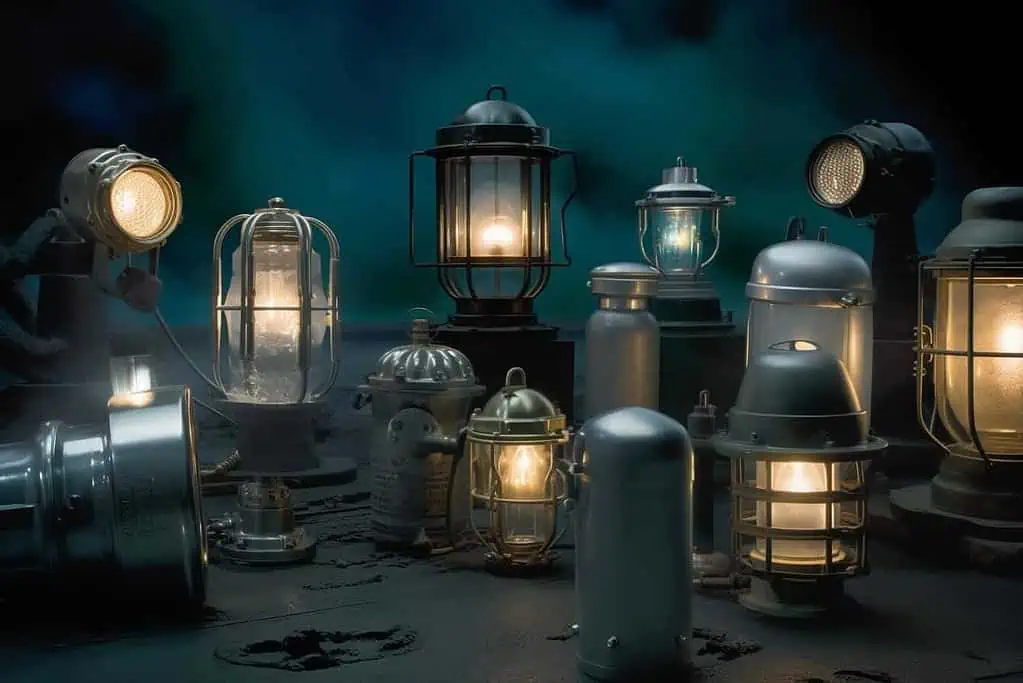
How is Marine Grade Lighting Unique?
The uniqueness of Marine Grade Lighting lies in its resilience. These lights illuminate and withstand harsh environmental conditions that can rust, dull, or destroy ordinary lights. With their unique corrosion-resistant properties, Marine Grade Lights provide reliable lighting solutions in the harshest conditions.
Where to Install Marine Grade Lights?
Marine Grade Lights find utility in a myriad of places. They’re for vessels, homes, and businesses in coastal areas. Places like docks, boardwalks, marinas, and waterfront properties can benefit immensely from installing Marine Grade Lights.
Also, if you are keen on a nautical theme for your restaurant, pub, or boutique, these lights can add that authentic marine touch!
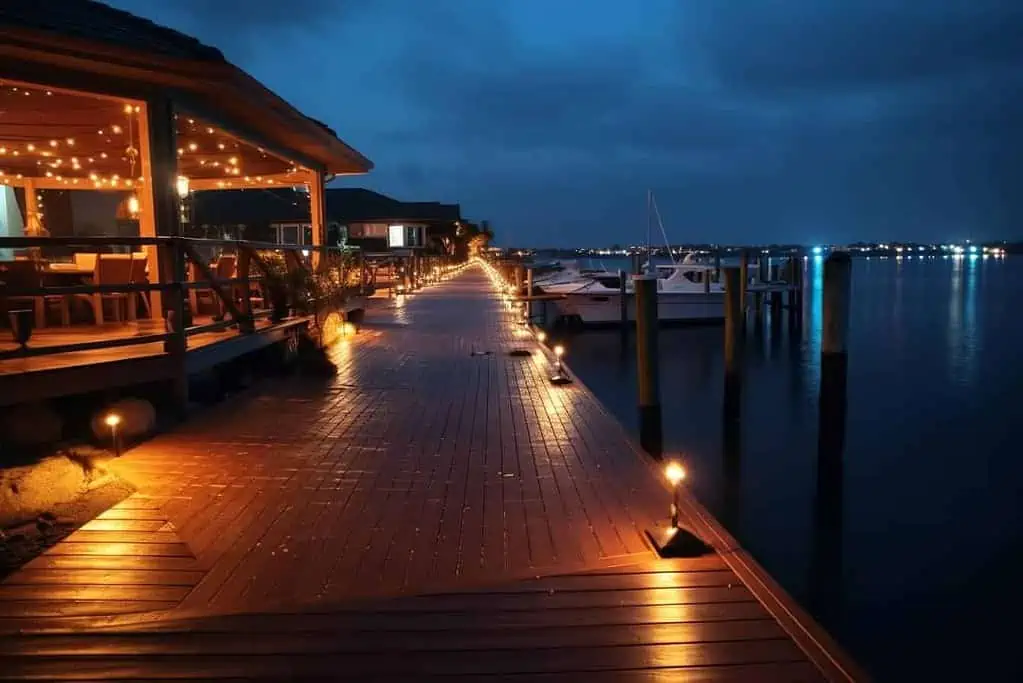
Exploring the Types of Marine Grade Lights
Marine Grade Lights come in various types, each designed for a specific purpose. Let’s look at some of the key types and their functions:
- Underwater Lights: Mostly used for illuminating swimming pools, water features, or enhancing the aesthetic of aquariums.
- Deck Lights: They provide essential lighting on boat decks, allowing safe movement in low-light conditions.
- Cabin Lights: These are interior lights ensuring visibility inside the boat cabins.
- Floodlights & Spotlights: These high-intensity lights provide broader illumination for operations at night.
- Dock Lights: Installed on docks, these lights facilitate the safe docking of vessels.
- Navigation Lights: Critical for all sea-going vessels, these lights indicate the size, angle, and direction of the vessel to prevent collisions.
- Post Lights: These are used for outdoor spaces, like walkways or gardens near the coastline.
- Wall Lights: Useful for lighting up the exterior walls of homes or businesses in coastal regions.
- Camping Lights: Ideal for camping or hiking trips near the coast.
Each type of Marine Grade Light has a specific role and place, so choosing the right one for your needs is essential.
Building the Armor: What Materials Are Marine Grade Lights Made of?
Marine Grade Lights use highly durable and corrosion-resistant materials to withstand harsh maritime conditions. These materials are carefully chosen based on their corrosion resistance, durability, and other qualities.
- Stainless Steel (316 Grade, 304 Grade, 321 Grade, 904 L Grade): This is a popular choice due to its high resistance to rust and staining.
- Aluminum: Lightweight yet sturdy, aluminum is another commonly used material. Marine grade aluminum typically undergoes unique treatments for enhanced corrosion resistance.
- Bronze: This is a classic material for marine applications, known for its robustness and resistance to corrosion in salty environments.
- Polycarbonate & Glass: These are used for the light covers, as they are solid and resistant to impacts and temperature changes.
Guarding the Light: The Importance of Standards and Certifications
When choosing Marine Grade Lights, looking for specific safety standards and certifications is crucial. These standards and certifications serve as a stamp of approval, ensuring that the product you purchase is safe, reliable, and suitable for marine conditions.
Some of the critical certifications and standards include:
- Ingress Protection (IP) Ratings: This measures a product’s protection level against intrusion by solid objects, dust, accidental contact, and water. A high IP rating is preferred in marine lighting for better protection against water and moisture.
- United States Coast Guard (USCG) Approval: This certification is essential for navigation lights used in vessels sailing in U.S. waters.
- International Electrotechnical Commission (IEC) Standards: These international standards ensure safety and performance in marine electrical and electronic devices, including lights.
- National Marine Manufacturers Association (NMMA) Certification: Products with this certification meet or exceed industry standards for safety and construction.
- UL Listing: This certification indicates that the product has been tested and meets specific safety standards.
Weatherproof Vs. Waterproof Vs. Marine Grade: Clearing the Confusion
The weatherproof, waterproof, and marine grades may sound similar, but they represent different levels of protection for outdoor lights.
- Weatherproof lights can withstand exposure to weather conditions like rain, snow, and sunlight. However, they are not designed for constant exposure to harsh marine environments.
- Waterproof lights can resist water ingress varying degrees, but not necessarily salt or corrosive environments.
- On the other hand, Marine Grade Lights are waterproof and specially treated to withstand saltwater and high humidity conditions found in marine environments.
So, when choosing outdoor lights for coastal areas or marine applications, Marine Grade Lights are the way to go.
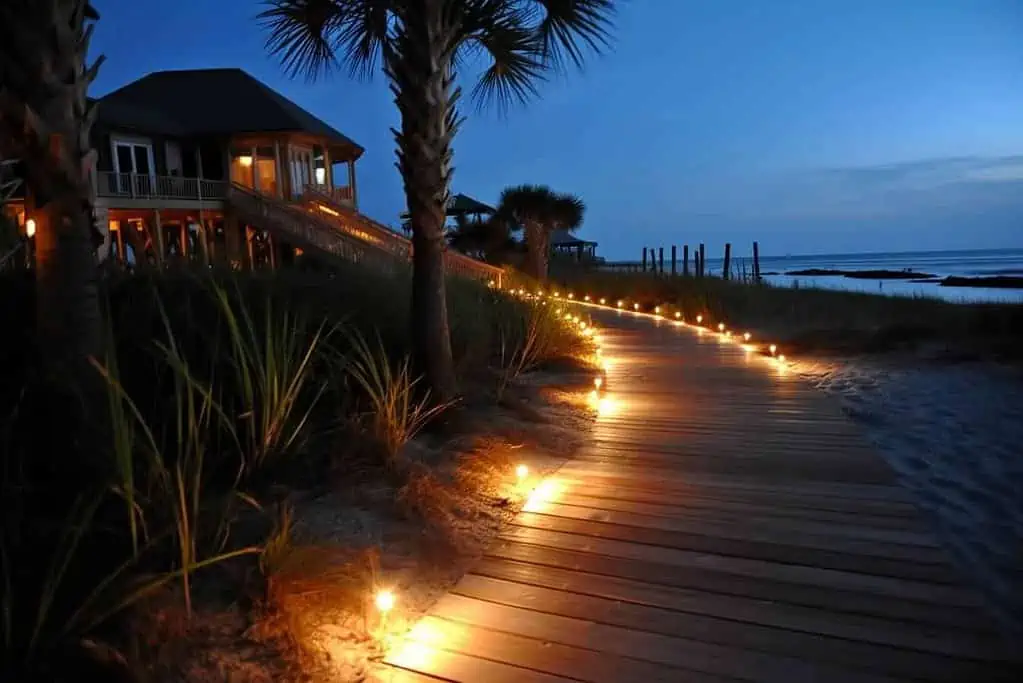
Unveiling Key Features of Marine Grade Lights
Marine Grade Lights boast several vital features that make them ideal for marine applications:
- Waterproofing: An outstanding feature of any Marine Grade Light, ensuring its functionality even when exposed to water or moisture.
- Long-lasting and Energy-efficient Lighting: Many Marine Grade Lights use LEDs, known for their longevity and energy efficiency.
- Heat Dissipation and Cooling Mechanisms: These features prevent overheating, prolonging the lights’ lifespan. For more information, you can read LED Heat Sink: What Is It and Why It’s Important?
Understanding these features can help you make a more informed decision when choosing Marine Grade Lights.
How to Install Marine Grade Lights?
Installing Marine Grade Lights is similar to installing regular lights. However, considering the unique conditions these lights will face, certain precautions should be taken:
- Choose the right light for the right place: Make sure you choose the appropriate Marine Grade Light for each location. For example, underwater lights for a pool, navigation lights for a boat, etc.
- Protect wiring from the elements: Ensure all wiring is properly insulated and protected from moisture. For more information, you can read How to Wire LED Strip Lights(Diagram Included).
- Follow the manufacturer’s instructions: This will ensure you install the product correctly and safely, preserving its warranty.
Maintenance of Marine Grade Lights
Even the most rugged Marine Grade Lights need regular maintenance to ensure longevity and optimal performance. Here are some tips:
- Regular Cleaning: Remove dust, dirt, or salt deposits from the light’s surface using a soft, damp cloth.
- Periodic Inspection: Check for any wear or damage, especially to the protective housing and seals that prevent water ingress.
- Replacing Failed Components: If a part fails or a light goes out, replace it immediately to prevent potential safety hazards.
These simple steps can help keep your Marine Grade Lights bright for years.
Safety Precautions for Marine Grade Lights
Safety is paramount when dealing with electrical fixtures; Marine Grade Lights are no exception.
- Proper Installation: Ensure the lights are installed correctly, with good quality, insulated wiring.
- Regular Inspection: Regularly check for any damage to the fixtures or wiring. Any potential issues should be addressed immediately.
- Compliance with local legislation: Ensure your Marine Grade Lights comply with local rules and regulations, especially for lights used in boats.
Recognizing the Limitations of Marine Grade Lights
While Marine Grade Lights are impressive, they do come with their own set of limitations:
- Cost: Marine Grade Lights are typically more expensive than standard lights due to the materials and technology used.
- Availability: You might not find as many style options in Marine Grade Lights as in regular lights.
- Installation: The installation can be more complex, particularly for specialized underwater or navigation lights.
- Compatibility: Not all marine lights are compatible with all boats or fixtures.
- Routine Maintenance: Marine Grade Lights still require routine maintenance to prolong their lifespan despite their robustness.
Understanding these limitations can help you set realistic expectations and make a more informed purchase decision.
Sustainability and Energy Efficiency in Marine Grade Lighting
Marine Grade Lights are not just about sturdiness; they also focus on energy efficiency. Many Marine Grade Lights use LED technology, which is incredibly energy-efficient and long-lasting. For more information, you can read How Long Do LED Strip Lights Last?
In addition, some marine lights are now being designed to use solar power, providing a green alternative for sustainable lighting. Such innovations are contributing towards making Marine Grade Lighting more environmentally friendly.
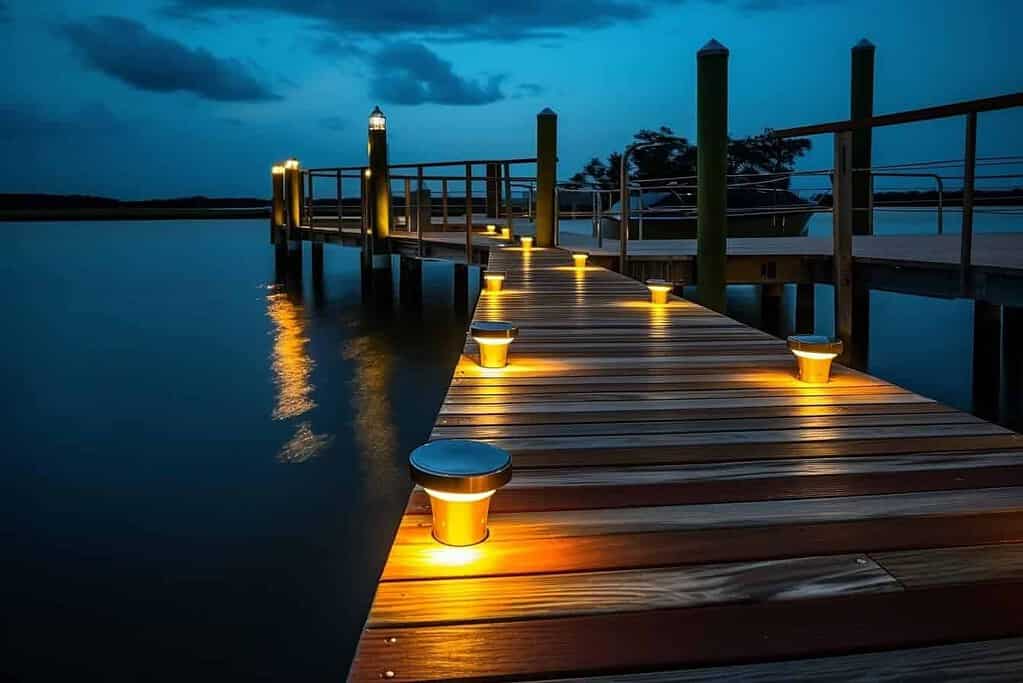
Future Directions in Marine Grade Lighting
Marine Grade Lighting continually evolves, with new technologies and materials being introduced regularly. From more intelligent, energy-efficient lights to those equipped with sensors and automated controls, the future of Marine Grade Lighting holds much promise.
We expect to see even more durable, reliable, and eco-friendly Marine Grade Lights as we look ahead.
How to Choose the Right Marine Grade Light?
Choosing the suitable Marine Grade Light can seem daunting, but keeping a few factors in mind can make the process easier:
- Determine Your Needs: Identify where and why you need the Marine Grade Light. The application will largely determine the type of light you need.
- Consider the Environment: Consider the environmental conditions the light will face. More corrosive or harsh environments will require higher-grade lights.
- Check for Certifications: Look for certified lights to meet safety and performance standards.
For more information, you can read The Certification of LED Strip Lights.
- Review the Materials: Check the materials used in the light’s construction. High-quality, corrosion-resistant materials are a must for marine lights.
- Energy Efficiency: Consider lights that are energy-efficient, such as LED lights.
By considering these factors, you can ensure you choose the best Marine Grade Light for your needs.
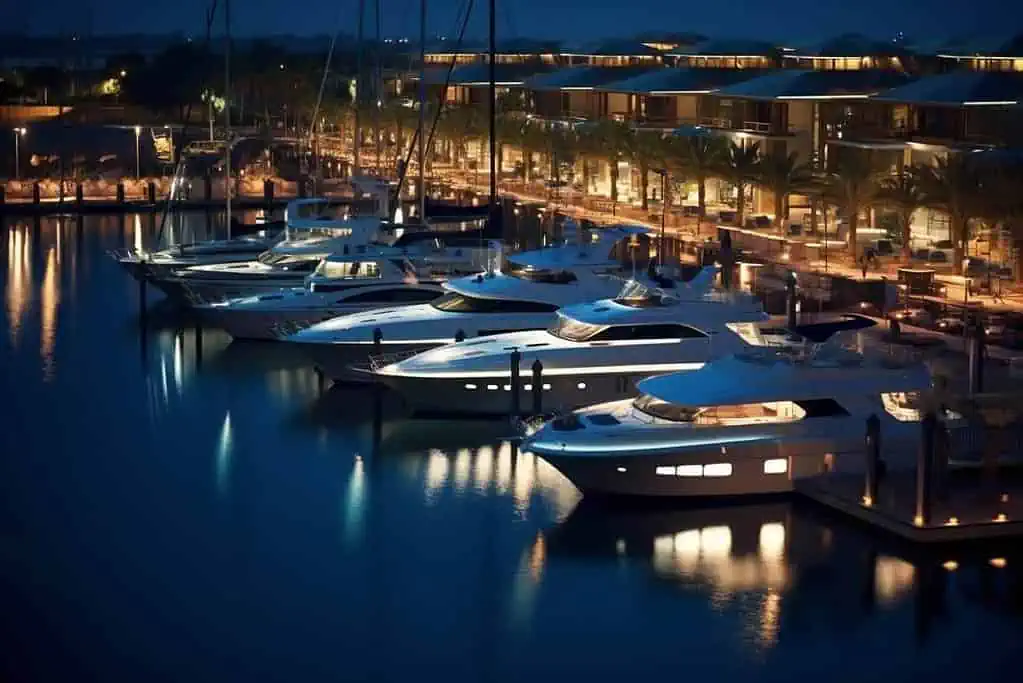
FAQs
Marine Grade Lights are specially designed for use in marine environments, characterized by their high resistance to corrosion, water ingress, and harsh weather conditions. They are often made from durable materials like stainless steel and polycarbonate and have protective features like seals and gaskets to prevent moisture and salt intrusion.
There are several types of Marine Grade Lights, including underwater lights, deck lights, cabin lights, floodlights, spotlights, dock lights, navigation lights, post lights, wall lights, and camping lights. The type of light you choose will depend on its intended use.
Marine Grade Lights are made from materials that can withstand the harsh marine environment. These include corrosion-resistant materials like stainless steel and bronze and waterproof materials like polycarbonate and glass. Using these materials helps to ensure the longevity and durability of the lights.
Installation procedures may vary depending on the type of Marine Grade Light. It’s recommended to follow the manufacturer’s instructions for the best results. Hiring a professional is advised for complex installations, like underwater or navigation lights.
Regular cleaning and inspection are essential for maintaining your Marine Grade Lights. Remove any dust, dirt, or salt deposits from the light’s surface, check for any signs of damage or wear, and replace any failed components immediately.
Yes, many Marine Grade Lights use LED technology, which is highly energy-efficient. Additionally, some solar-powered marine lights offer a sustainable alternative for marine lighting.
Innovations in Marine Grade Lighting include using energy-efficient technologies like LEDs, automated controls, and even intelligent features. Solar-powered lights are also becoming increasingly popular.
When choosing a Marine Grade Light, consider your specific needs, the environmental conditions, the light’s certifications, the materials used in its construction, and its energy efficiency.
No, while Marine Grade Lights are designed for marine environments, they can also be used in other coastal or outdoor settings where resistance to moisture and corrosion is necessary.
Marine Grade Lights are designed to withstand harsh weather conditions, including strong winds, heavy rain, and high salinity.
The IP (Ingress Protection) rating indicates how well the light is protected against water and solid particle intrusion. A higher IP rating means better protection.
The lifespan of Marine Grade Lights can vary depending on the specific model and how well they are maintained. However, many Marine Grade LED Lights can last tens of thousands of hours.
Regular lights are not designed to withstand the harsh conditions of a marine environment and may fail prematurely. Marine Grade Lights are recommended for their superior durability and reliability.
Yes, Marine Grade Lights come in various colors, including white, blue, green, and red. This can enhance your boat’s or property’s aesthetics while also serving functional purposes such as signaling.
While they are designed for saltwater environments, Marine Grade Lights can also perform excellently in freshwater settings due to their high resistance to water and corrosion.
Suggestion for a mid-journey image: ‘A graphic depicting a selection of Marine Grade Lights accompanied by a list of their unique features, such as their materials, certifications, and types.’
Conclusion
Marine Grade Lights stand out for their resilience, durability, and adaptability to harsh environments. Whether you’re lighting up your boat, a coastal property, or an aquarium, these lights promise to deliver unmatched performance, even in the most challenging conditions.
While the initial cost of Marine Grade Lights may be higher than regular lights, their longevity, reliability, and energy savings make them a worthy investment.
So, if you’re sailing into the world of Marine Grade Lighting, remember, it’s not just about lighting your way—it’s about keeping your light shining bright, even against the tides!

